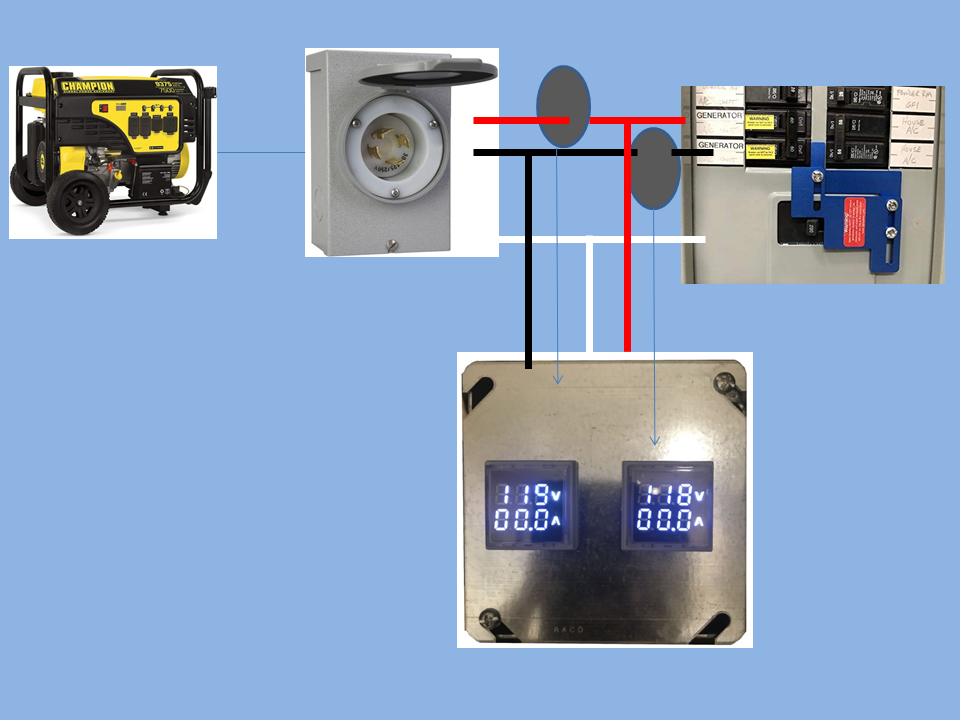Our current and voltage meter with 2 sensors and cover plate is the perfect tool for monitoring your portable generator when it is connected in a way such that it powers the entire house.
The recommended method of connection is as follows:
Install a new 2 phase breaker in your panel with an interlock kit such that the new 2 phase breaker can only be turned on when the main power is off. This will allow this new breaker to back feed all remaining circuits without a risk of a cross between your generator and utility power.
The connection to the new 2 phase breaker is made to a generator feed box located outside of your house. This path between the generator feed box and the panel is where our sensors will be installed. Install one current monitor probe on each of the two hot lines from the exterior feed box and the panel. Tap from one hot and neutral to the X1/X2 power input connections of one sensor. Tap from the other hot and neutral to the X1/X2 power input connections of the other sensor.
Normally, the sensors should now be powered off. To use the sensors and your generator follow the following steps:
- Turn all sub breakers off on your panel one at a time to shed all of the load from your main breaker
- Turn off the main breaker
- Connect the generator to your external feed box and start the generator
- The Monitor panel should now be showing you the voltage of each of the two phases coming from the general (typically 110-120V) and no current.
- Move the interlock such that the main breaker cannot be turned back on and the generator breaker can now be turned on
- Turn on the generator breaker
- The panel should still show the correct voltage and no current
- You may begin to turn on sub breakers. Note the current on each phase of the generator. Be sure neither phase is being overloaded per your generator specs as you turn on the sub breakers.
With this system you can easily see how many circuits your generator can feed and if there is a large imbalance across the two phases when trying to power your house from a portable generator.

Avoid surprise large loads, generator overloads/damage, and save fuel by knowing the precise load as you turn on every branch circuit.
NOTE: Be sure to follow all local codes. All electrical work should be permitted and inspected where required. All electrical work should be performed by a qualified and licensed electrician.
